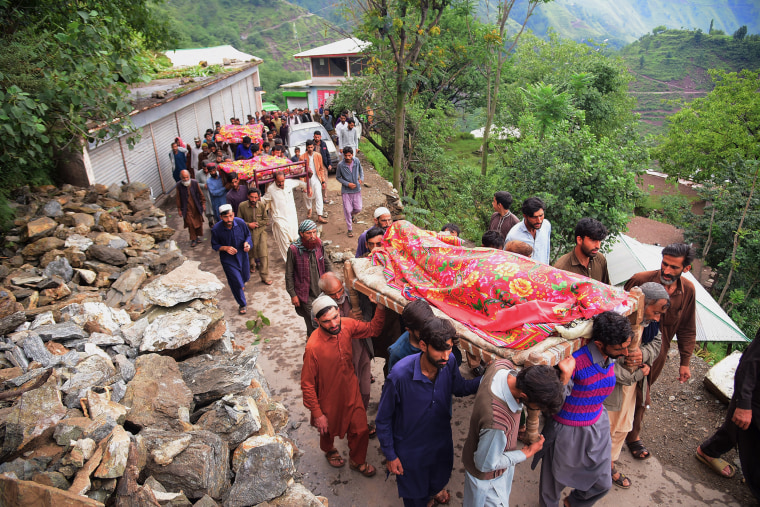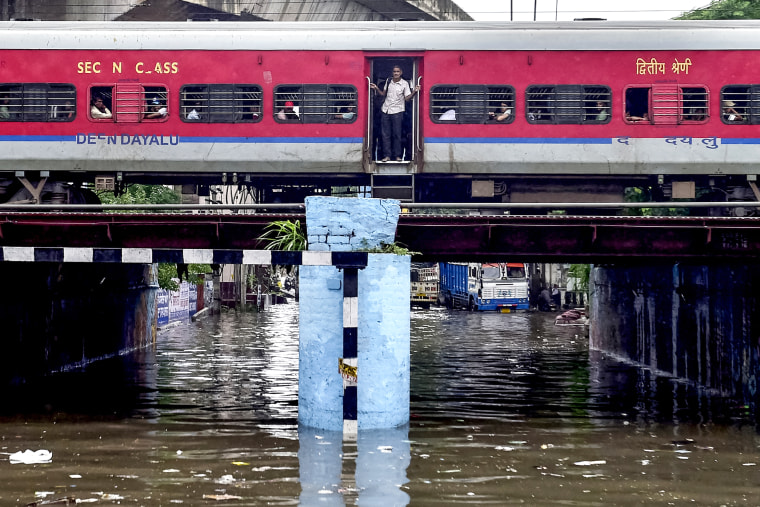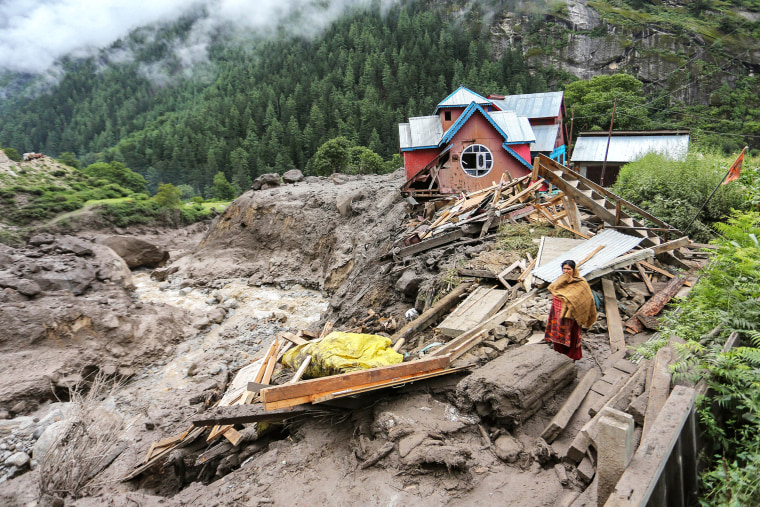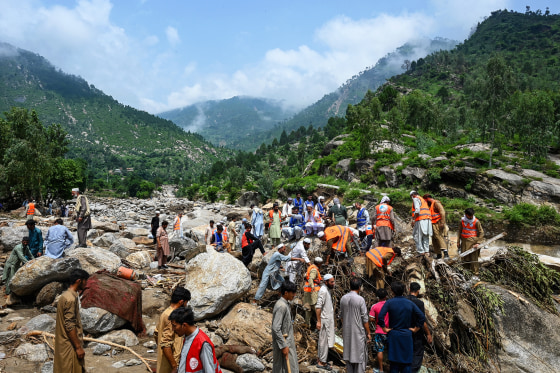More than 430 people have been killed after intense deluges swallowed entire villages in mountainous India and Pakistan as climate change intensifies what are called “rain bombs,” or cloudbursts.
A majority of the victims were in Pakistan, where more than 370 people have been killed in the northwest province of Khyber Pakhtunkhwa since Aug. 15, the provincial disaster management authority said Wednesday. At least 228 deaths were in a single district, Buner, with dozens more missing.
Video from the province showed entire streets turned into muddy rivers, with cars and homes swept away.

In neighboring India, at least 60 people were dead and over 200 missing last week after water surged through the village of Chashoti in Kashmir, Reuters reported.
The Indian Meteorology Department defines a cloudburst as heavily localized rainfall of 4 inches in an hour. While forecasters can predict with high accuracy which state or province might see heavy rain, cloudbursts can be difficult to predict due to their local nature, short duration and suddenness — making them the site of heavy destruction and fatalities.
They appear as if the clouds are discharging all their moisture at the same time, like a rain bomb.

“It’s like an overhead tank has burst on top of a house,” said Khalid Khan, a former special secretary for climate change in Pakistan and chairman of the climate initiative PlanetPulse. “The rain that would have taken three days to fall instead falls in one hour.”
The lack of early warning infrastructure in some of the affected areas has added to the fatalities. Buner residents accused Pakistani officials of failing to issue evacuation warnings, saying there were no broadcasts from mosque loudspeakers, which is a common warning method in remote areas.
The government said that an early warning system was in place for the district, but that the downpour was so sudden that alerts came too late.
There is “no forecasting system anywhere in the world” that can predict the exact location and time of a cloudburst, Asfandyar Khan Khattak, a Pakistani official from Khyber Pakhtunkhwa, told The Associated Press.
Heavy rain is not uncommon in South Asia this time of year, but experts largely agree that the frequency and intensity of cloudbursts have increased in recent years, in part due to climate change.
With the world now more than 1 degree Celsius (2 degrees Fahrenheit) warmer than it was before industrialization, experts say cloudbursts are thus a glimpse into the devastating effects that climate change could bring.

For every 1-degree-Celsius increase in atmospheric temperature, air can hold about 7% more moisture. This exacerbates rainfall conditions, particularly in Pakistan, which is flanked by melting glaciers and snow on its east and the warming Arabian Sea to its south.
“Seven percent is a very average number, and in some places for every degree of warming you can get up to 20 or 25% increase in rainfall intensity because the atmosphere can hold that much water vapor,” said Govindsamy Bala, a professor at the Center for Atmospheric and Oceanic Sciences at the Indian Institute of Science in Bengaluru.
Cloudbursts also typically occur in mountainous regions, which become sites of flash floods and landslides as the air is forced to rise when encountering high terrain, which results in it rapidly cooling and condensing into dense clouds.
In Pakistan and India, rising moisture from the Arabian Sea and the Indian Ocean runs into the mountainous terrain of the Himalaya, Karakoram and Hindu Kush mountain ranges, causing the sudden downpours.

Earlier this month, another cloudburst hit India, this time in the northern state of Uttarakhand, where floodwaters poured into the Himalayan village of Dharali. Meanwhile, Pakistan has already received 50% more rain than in the same period last year, Lt. Gen. Inam Haider, chairman of the National Disaster Management Authority, told reporters in Islamabad last week.
“We can tell whether it’s going to be heavy rain or light rain, but at that smallest scale, I don’t think anybody can forecast a cloudburst,” Bala, the professor, said.
Pakistan, which is responsible for less than 1% of global greenhouse gas emissions, is the country most affected by extreme weather events, according to the Climate Risk Index compiled by the Bonn-based nonprofit group Germanwatch.
In 2022, Pakistan declared a national state of emergency after a tenth of the country was inundated with floods that killed nearly 1,700 people, with the World Bank estimating reconstruction costs at $16 billion.
But some precautions are possible.
“You can have localized warning groups, forecasts, instead of doing it from a faraway distance,” said Khan, adding that a community-based approach of drills, sirens and messaging groups can help evacuate residents early.
“It has to be us saving ourselves,” he added. “We need flood-resistant infrastructure just like Japan has built earthquake resistance.”

